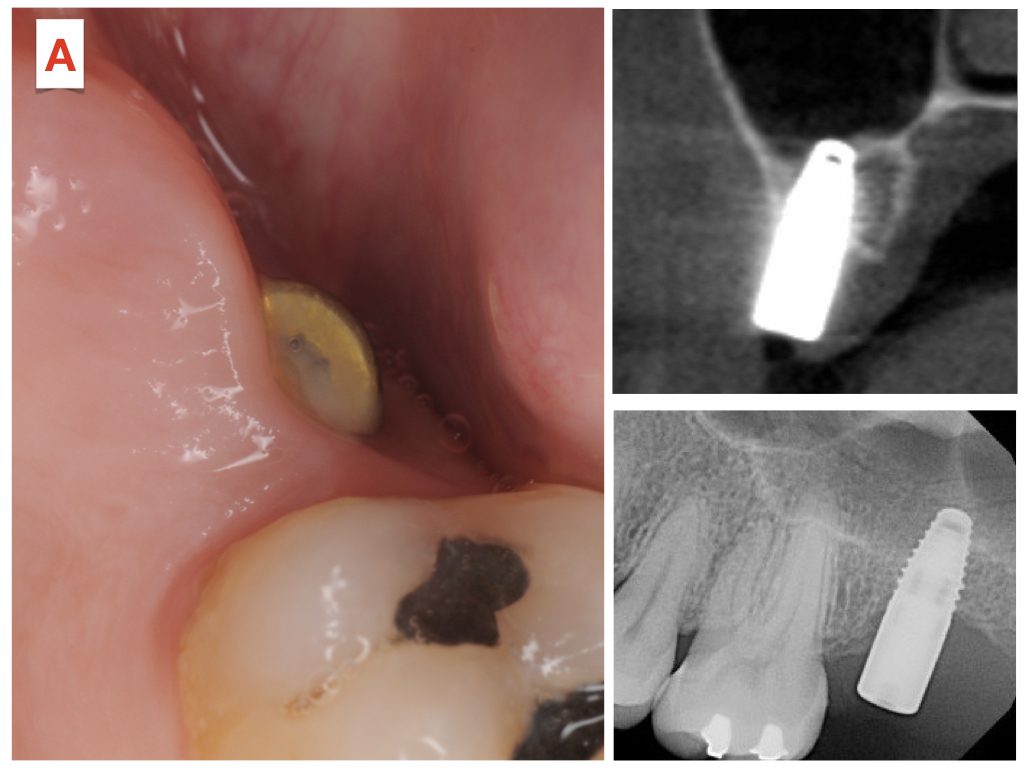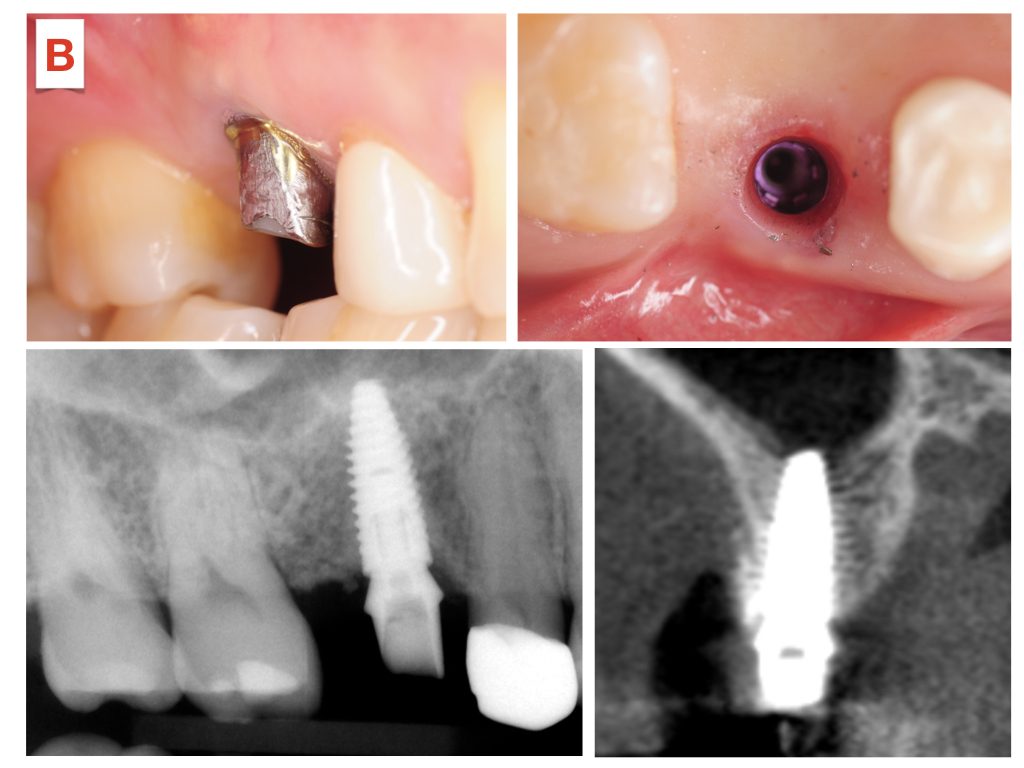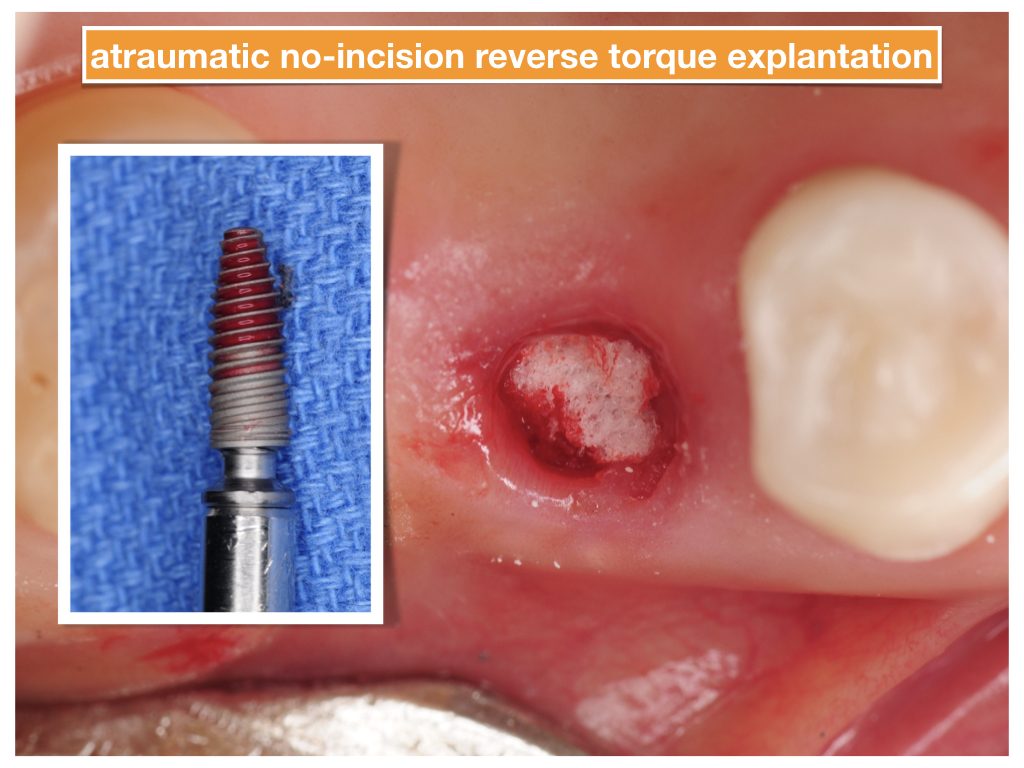Almost any dentist can place a dental implant- But not everyone can plan and execute it properly! It requires expertise, comprehensive diagnostics, understanding of implant bio-mechanics, full knowledge of tissue and site management, surgical skills, and mastery of surgical-restorative-laboratory principles. And of course execution: placement and restoration of an implant with 4-dimensional results in mind- That is having a patient who loves the new teeth, smiles openly, eats comfortably, and is not aware that there is a dental implant doing it all- It’s what I call 4-dimensional dentistry.
This patient came to us with chronic pain around her upper molar dental implant which was attempted to be restored by her dentist but was not successful. The implant was left in place and patient was advised to go back to get another crown. She never did as the pain never resolved. She was also told the implant is fine. But is it?

Here is the problem list with her implant:
- Wrong size / diameter implant- Too narrow for a molar tooth
- Lack of adequate bone width- Missing or very thin on both sides
- Lack of adequate gum tissue- Poor quantity and quality as well as no attached gingiva (that’s the kind that does not move)
- Peri-implant mucositis (inflammation around gum tissue) – Due to lack of bone and soft tissue
Another patient came to us reporting continued loosening of his dental implant crown, food entrapment, and bad odor. His crown was cemented several times but kept coming loose. He had it checked by several dentists who told him the implant is fine. But it is not fine and the patient knew that. Yes, it is healed and integrated and quite healthy. But there are problems.

Here is the problem list which directly relates to his complaints:
- Wrong size / diameter implant- Too narrow for a molar tooth
- Wrong position- The implant is positioned off axis to one side
- Wrong abutment design- Too thin to create emergence phenomenon (contours that mimic natural teeth as they emerge from gum tissue)
- Stock abutment- Not customized for this tooth, hence why the tissue transition to implant looks so narrow
The implants in both patients had to be removed. We used our atraumatic reverse torque explantation technique to accomplish this.

So, how does one prevent such complications? And how do we deliver on the promise to patients that they are going to have a better bite, smile, and oral health after their treatments? Here are the current principles and work-flow for successful planning and implementation of dental implant treatments:
- Digital 3-D diagnostics using Cone Beam CT Scan
- Occlusal / tooth form analysis
- Functional / aesthetic analysis
- Digital restoration design to achieve intended functional and aesthetic results
- 3-D dental implant planning for proper position and selection of implant diameter and length
- Augmentation of bone with grafting when necessary to create the foundation necessary for implant support
- Augmentation of soft tissue (gingiva) with grafting when necessary to create thick tissue and adequate keratinized (attached gingiva) around implants
- Fabrication of provisional restoration supported by implant to create emergence phenomenon
- Design and fabrication of customized / anatomic abutments to create emergence phenomenon
- Design and fabrication of final restorations that mimic the accepted prototype (provisional restoration) and patient needs
- Review of dental implant hygiene and maintenance requirements to keep implant healthy
These principles were clearly not followed in these two patients leading to disappointment and frustration. After all the time and money spent, the implants had to be removed incurring additional cost, time, and procedures. Unfortunately, most patients do not know better and depend entirely on what their dentists tell them.
If in need of dental implants, ask questions. There is no shortcut to success!